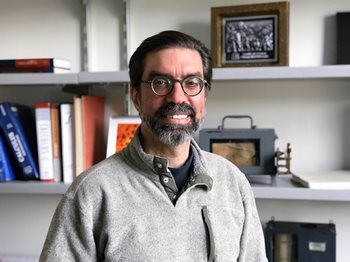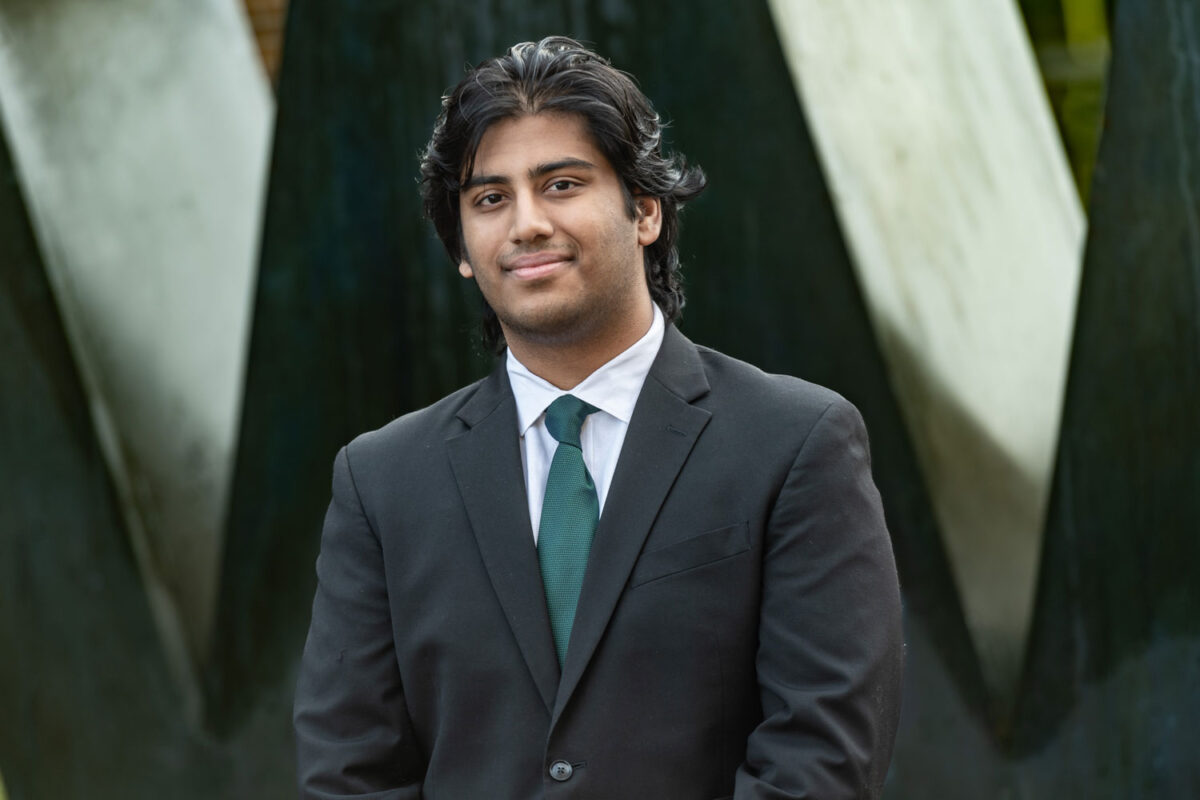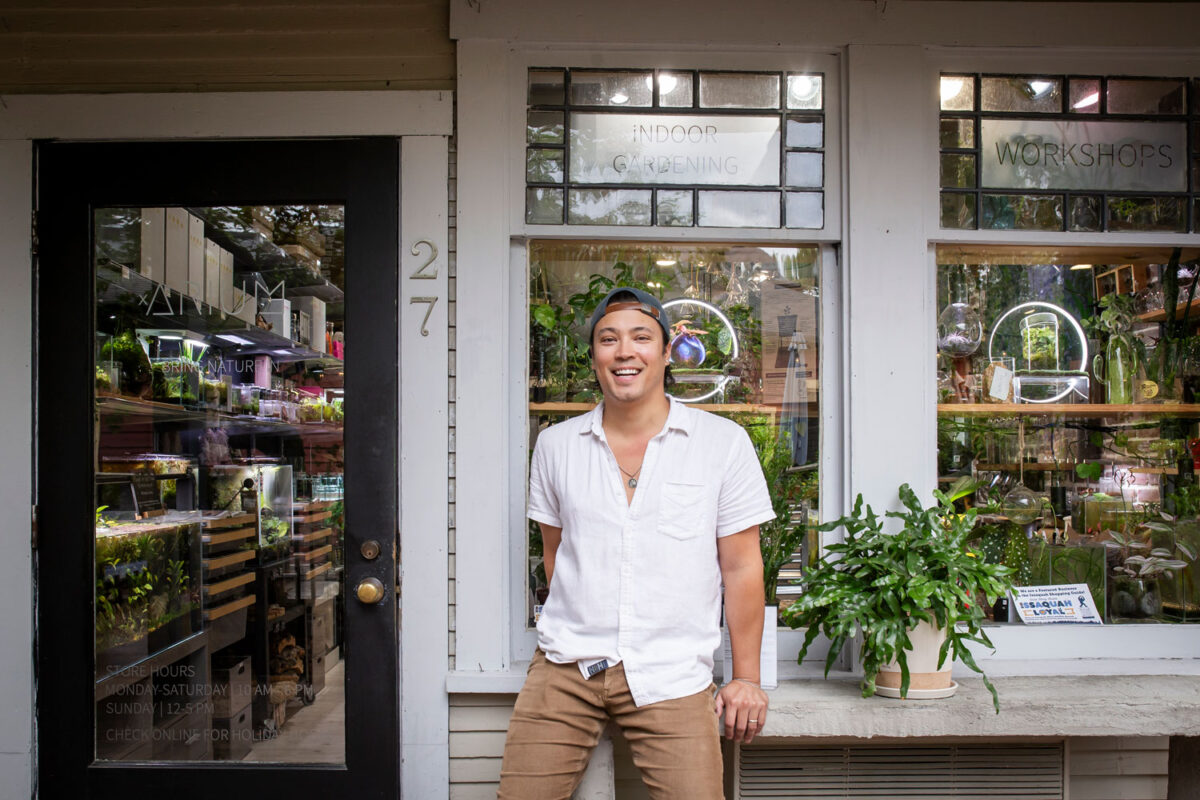02/27/2023
Since receiving his doctorate from Yale University 25 years ago, Dr. Eric Salathé, associate professor in the University of Washington Bothell’s School of STEM, has engaged in climate research with an intriguing lens, looking closely at regional climate change and the impacts of climate change on human and natural systems.
“Traditionally, earth science is about resource extraction or trying to figure out how the continents got the way they are,” said Salathé. “But at UW Bothell, the Earth System Science degree is a combination of traditional geology, physics, earth science and environmental science. Its approach is thinking about the earth as an integrated system of different physical components: the atmosphere, the ocean and also human components such as cities and people and industry — and the interactions among those.”
This more holistic, integrated approach of looking at the Earth also informs Salathé’s innovative perspective on climate action, which he shared in a talk as part of UW Bothell’s Climate Dialog Speaker Series.
His ideal approach to addressing climate change balances strategies to reduce our exposure to climate change with strategies to help humans live more sustainably, including electric cars and wind turbines.
Joining a new generation
Salathé began his journey in science focused purely on physics but branched out to climate science as well while in a doctoral program at Yale University. “This was the late ‘80s. I was working on trying to get a Ph.D. in Physics, but I didn’t really care about these problems that we were trying to solve at the time,” he said. “So, I thought, what do I care about?”
Climate change was just beginning to emerge as a scientific and societal focus, and Salathé — passionate about the problems this field was looking to solve — was hooked. He pivoted to earning a doctorate in Geology and Geophysics, and became part of the first generation of graduate students to focus exclusively on human-caused climate change.
Fast forward to 2000. Salathé began to work with the University of Washington’s Climate Impacts Group, an interdisciplinary research group composed of natural, physical and social scientists as well as communications and administrative professionals. There he met Dr. Ed Miles, a political scientist whose efforts to bring scientists and policymakers together helped Salathé to solidify his own life’s work.
“What I really want to do as a scientist,” said Salathé, “is find the kind of scientific information that is needed to make policy decisions to clean up the climate and design infrastructure in a very localized way.”
Catalyzing local solutions
He is already doing this. Through his relationship with the Climate Impacts Group, Salathé’s research has helped inform the building of future-proofed stormwater infrastructure systems to decrease the risk of urban flooding in King County. He’s also done similar work in China, where heavy rains as the result of climate change have already begun causing severe, widespread urban floods.
To help policymakers, Salathé leverages data from a computer modeling project run in collaboration with the UW’s Department of Atmospheric Sciences that generates weather forecasts and climate simulations, among other data. He is specifically interested in where floods and heatwaves have their most severe effects and how humans can create more sustainable relationships with the land on which they live.
“You look at these wonderful flat valleys we have around the region that go from one ridge to another, and it’s flat in between. Well, how did they get flat?” Salathe asks. “Floods created that landscape. We’ve got I-5 and warehouses and all this structure built in what is clearly a flood-shaped landscape. So, the geophysicist in me looks at the way we’re living on the landscape and says this is unsustainable.
“We’re not properly respecting the shape of the land that we’re living on, and that makes those living here more vulnerable to climate change’s effects, such as floods.”
By deep diving into information about rainfall, snowpack and heatwaves in our region, Salathé offers policymakers finely tuned information they can use to develop more sustainable solutions to increase their communities’ resilience to climate change. Little by little, this can ultimately improve human climate resilience overall.
Looking through a different lens
Since beginning at UW Bothell in 2010, Salathé has taught with this sustainability lens, a stark contrast to the climate change mindset that puts significant emphasis on technologies as the end-all, be-all solution to climate change. To Salathé, technology that works to reduce the magnitude of climate change itself is just one side of the climate change response equation.
“I’m not questioning the importance of decarbonizing energy. I’m saying that in doing this we’ve lost track of some of the more holistic strategies that are necessary for a more sustainable future,” said Salathé. “When we just technology our way out of a problem, we create another set of problems that we’re going to have to come back and deal with later.
“We need to become more resilient and reduce our sensitivity, increase our adaptive capacity and reduce our vulnerability.”
For instance, just making electric cars, which can reduce carbon emissions, doesn’t manage the negative impacts climate change has on humans. In fact, mining lithium and other compounds used to make electric cars creates new environmental damage that will need to be addressed. Thus, Salathé said, electric cars are not a sustainable solution to climate change on their own.
Sustaining the human population
In tandem with studying these sorts of technological efforts, Salathé’s research interests are motivated by his desire to generate information that informs changes in policy, engineering or public health to help manage human vulnerability to climate change.
“A common way to express the vulnerability of a community to the impacts of climate change,” said Salathé, “is through a qualitative formula: vulnerability = exposure x sensitivity – adaptive capacity.”
This equation implies we can manage vulnerability to climate change by understanding a community’s exposure to a risk (such as floods), by reducing the community’s sensitivity to the flood’s impacts (building outside of high-risk flood zones) and by increasing the community’s adaptive capacity with sustainable solutions (engineering homes to withstand floodwaters).
Salathé offers wildfire risk as another example of how humans mismanage their resiliency in natural environments.
Understanding natural landscapes
“There are landscapes that are fire landscapes, where fire is supposed to be natural. But in Eastern Washington right around the Tri-Cities and in Southern California, they’re building farther and farther out in the scrub desert. People are moving to places that are fire landscapes, which makes them more exposed to fire and creates more ignition because of the human activity.
“We don’t have control of the landscape,” he said, “but we have control over how we live on the landscape and respect the landscape that we live on.”
With this in mind, Salathé said, it makes sense not just to consider the magnitude of climate change but also to see the problem in the larger context of sustainability: Any technology offered to reduce the magnitude of climate change won’t help if humans are still heavily engaging in other, inefficient behaviors.
“Climate change is an energy problem. We need energy. We need a lot of it. But there’s only so much energy,” said Salathé. “Still, humans want bigger and bigger cars. We want to have bigger and bigger houses. We want to live farther and farther away from the city and drive to our jobs or zoom into our jobs. So, you read the most important thing you can do is buy an electric car or buy a heat pumps.
“Well, maybe the most important thing you can do is drive less?” he asks. “Or build smaller houses? But we say ok, we just need to get heat pumps and electric cars so we can still drive 6,000-pound cars 20,000 miles a year.”
Making better decisions
As he continues to research, advocate and teach, Salathé is now turning his attention to heatwaves and is planning to collaborate with colleagues at the UW’s School of Public Health and King County Public Health. His hope is that together they can inform specific, targeted actions in the places in Washington state that are most vulnerable to heatwaves, such as Centralia.
“If I can say the main hotspots are these communities along the lowlands south of here … we can make better decisions,” said Salathé. “And I would really like to do very fine-scale urban scale modeling and look at how trees and concrete and building design affect temperature.”
Until he retires, Salathé wants to continue generating research data to inform policymakers as they create sustainable solutions for increased human climate resiliency — one community at a time.
“I’ve been doing climate research since 1990, and I’m optimistic,” he said. “We’ve made huge progress. We’re not where we need to be, but the United States has been reducing its total greenhouse gas emissions since 2005. It’s been a steady decline.
“I’m just thinking about all the other problems that threaten sustainability. There are many risks that threaten a sustainable world.”




